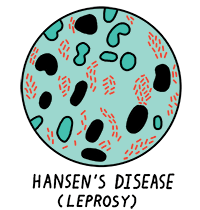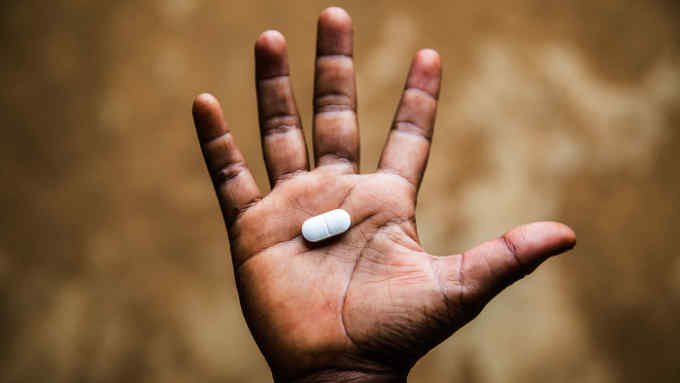Leprosy: India’s hidden plague
Roula Khalaf, Editor of the FT, selects her favourite stories in this weekly newsletter.

At first glance, the Naba Kusta ashram is beautiful. Standing on a freshly swept patch of dirt, its pink and yellow walls decorated with painted flowers, the little colony in the city of Purulia, West Bengal, looks peaceful. But life has been far from serene for its 34 inhabitants. They have leprosy, a disease that is curable but for its two worst symptoms — poverty and exile.
The patients come from all over India and have received treatment at a local hospital run by the Leprosy Mission. In theory, leprosy is easy to treat, requiring a course of drugs lasting between six months and two years. But many at the government-run ashram, like 64-year-old Rustom Singh Mundu, who has lived there for five months, will not be able to return home even once they have been cured. “My family kicked me out. They said, ‘You’ll make everyone ill.’ I’m never going to go back home,” he says. Late diagnosis has left Mundu severely disabled — he cannot walk and relies on food donated to the ashram by local landowners. But there is hardly enough to eat, he says.
The World Health Organisation (WHO) declared leprosy officially eliminated as a public health problem in India in 2005, but the disease is still widespread in regions where, doctors say, poverty and stigma have kept patients hidden and untreated. The problem is, in part, one of definitions: a disease is classed as “eliminated” if fewer than one in 10,000 people contract it in a given year. In India, elimination was achieved on a national level, even as some areas continue to have high prevalence of the bacteria. “There’s no scientific basis for why this term is used, but it was a catchy terminology that boosted [aid] efforts across the world,” says a senior public health official who declined to be named. “Unfortunately, what wasn’t very clearly communicated to political leaders is what this milestone means.”
Anil Kumar, who leads India’s National Leprosy Eradication Programme (NLEP), says the 2005 declaration halted progress, allowing the disease to spread again. Funding and resources fell, he says, and health workers stopped making door-to-door visits to identify hidden cases. Instead, a “passive detection” phase began that relied on people coming forward of their own accord to report the disease.

The result was that the number of patients arriving at hospitals with severe disabilities from leprosy nearly doubled in the following decade, according to government data. During a two-week detection campaign organised by the NLEP at the end of 2016, more than 1,000 cases were discovered in nine states. The government reversed its “elimination” status for the state of Orissa as well as the National Capital Territory of Delhi and the so-called union territories of Chandigarh and Lakshadweep, a tropical archipelago off the south coast.
In Purulia, leprosy bacteria have been found by scientists in the soil and water, through which Joydeepa Darlong, a doctor at the Leprosy Mission hospital, says it infects children who run barefoot over the dirt.
Gaju, a 50-year-old patient at the hospital, watches unflinchingly as Darlong pulls maggots out of his foot. Like many leprosy patients, Gaju, who goes by one name, has lost the feeling in parts of his body. The numbness is such that, long after his muscles had wasted away, he continued his job running errands at Jawaharlal Nehru University in New Delhi. After a course of medication in Delhi failed to work, he says his leg deteriorated and doctors recommended that he travel to Purulia where the Leprosy Mission is known for handling complicated cases.
“He has to elevate his leg, which he wasn’t doing, and he got ulcers because of the stasis,” says Darlong. “When [patients] stand for a long time their veins get blocked.”

Leprosy has afflicted more than 15m people worldwide over the past two decades, according to the WHO, with India accounting for more than half of cases discovered in 2015. The disease, which often affects those with weak immune systems who live in close contact with untreated patients, initially causes irritable spots before the bacteria begin to attack nerves, causing muscle paralysis and lasting disabilities. These long-term effects can be avoided if the disease is diagnosed and treated quickly, but stigma and a widespread, though false, perception that it is highly contagious often lead patients to hide their symptoms until they become extremely serious. In the Leprosy Mission hospital in Purulia, an entire workshop is dedicated to sculpting limbs for patients that have lost their legs in this way.
Despite these challenges, Kumar’s goal is a drastic reduction over the next two years in the number of cases of long-term disability, which, he says, reflect a failure of the system. With support from prime minister Narendra Modi and the central government, which this year doubled the programme’s funding from Rs460m to Rs1bn ($15m), Kumar hopes the disease can be banished for good.

Last September and October, Kumar’s national leprosy case detection campaign was carried out, using an army of health workers to oversee two-person volunteer teams. Each pair of volunteers (a man and a woman) was assigned 1,000 people and paid Rs50 (about $0.75) a day to check 16 or 17 households a day over the course of two weeks, for the patches of irritable skin that are early symptoms of the disease. In all, about 360m people were covered, says Kumar.
In Vadodara district, in Modi’s home state of Gujarat, Minakshi Patel, a doctor at a village health centre, says the campaign, which cost the government Rs500m, has been successful. “It was very good,” she says. “Before, there were hidden cases. Now, we have found them.” She says there were monthly meetings to raise awareness and two full days of training.
Other health workers disagree. According to one monitoring progress on the ground for the government, the thoroughness of the detection campaign varied dramatically by region, as did the reliability and quality of the volunteers. Darlong is also critical of the campaign. She says her hospital was forced to turn away people who showed no sign of the disease after volunteers gave them a positive diagnosis in an effort to prove they were being diligent in their job. “Until last year everyone was like, ‘We’ve got rid of leprosy.’” she says. “Now everyone says, ‘We have found it.’” The stigmatisation of leprosy patients, she says, is very much alive despite “eyewash” from politicians, who claim the situation is improving.
In Gujarat, the issue has become political for some after the prime minister called on the country in January to “eliminate the social stigma attached with this disease”. JP Gupta, the state’s health commissioner, says more money is always welcome. “I wouldn’t say that stigma has been totally eliminated,” he says. “[Fighting leprosy] is manpower-intensive work; it requires human resources.”

Kumar believes a lot more progress is possible. He wants to see leprosy colonies closed down and patients reintegrated into their communities; the development of a vaccine that is to be trialled in Gujarat this year; and early detection across the country so that disabilities are reduced to less than one in a million by 2019.
Some of these goals are controversial. The vaccine trial has prompted scepticism among doctors and government health officers, in part because studies have shown that the vaccine, mycobacterium indicus pranii, is only 28 per cent effective, based on studying the population again after nine years. “We don’t want to do it. There is no vaccine that has been developed that is effective,” says the senior health official in Gujarat.
Doctors and WHO officials say existing treatments should be prioritised over a possible vaccine because they are known to work, and treated patients are not infectious. “It’s a disease of the poor and decentralised,” says one public health official on condition of anonymity. “You need a pro-poor approach — this is the missing element in the WHO headquarter’s plan and the country plan.”

After the disease was declared eliminated in 2005, funding for the WHO’s global leprosy programme fell. It now receives about $2.5m a year from the Nippon Foundation, a Japanese grantmaker and its only major donor, compared with between $7m and $8m before 2005, in addition to free medicine from Novartis, the pharmaceuticals group. Famkima Darlong, Joydeepa’s husband, who is superintendent of the Leprosy Mission in Purulia, says that funding cuts have left the hospital with half the money it had before the country was declared leprosy-free. Aside from stopping the door-to-door vetting of villagers in the region, it has closed a school it used to run for children with leprosy.
Darlong says the hospital is also taking on more and more non-leprosy patients for small fees, so that leprosy treatment can remain free. With only four doctors on staff and more than 250 people now moving through the outpatient clinic each day, carrying on can seem daunting. “Doctors don’t want to work in a place like this,” he says.
But while India’s battle against leprosy hangs in the balance, some patients say that they are optimistic about the future. “I’ll go back when I’m better,” says Gaju, who says he has been given medical leave by the university. “People are much more understanding now, no one told me to go. I think it will be OK.”


Comments